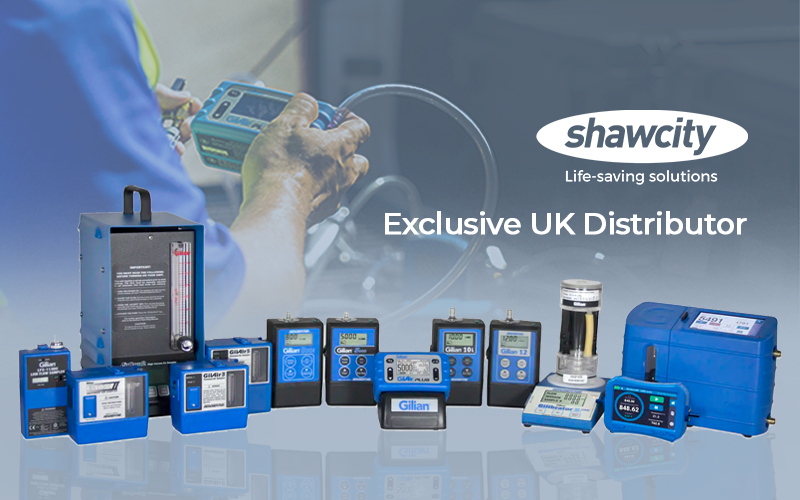Fugitive emissions refer to the unintentional or accidental release of pollutants, gases, or vapours into the atmosphere from various sources, commonly during industrial operations or processes from equipment.
These emissions can stem from equipment malfunctions, leaks, faulty seals, or other unforeseen events. Unlike emissions released through designated or controlled pathways, such as smokestacks or exhaust pipes, fugitive emissions instead escape into the air through unintended channels.
These emissions originate from a variety of sources, including industrial facilities, chemical plants, refineries, storage tanks, pipelines, wastewater treatment plants, demolition, and remediation. However, they are not limited to industrial settings and can also occur in non-industrial environments as well.
Why detect leaks?
Fugitive emission leaks can have both long-term and immediate consequences, making them a significant environmental and public health concern. Factors to consider include:
Air Pollution and Climate Change
Fugitive emissions often involve the release of greenhouse gases such as methane, a potent contributor to climate change. Methane is many times more effective at trapping heat in the atmosphere compared to carbon dioxide in the short term.
Environmental impact
Other pollutants such as VOCs and hazardous air pollutants can degrade air quality, leading to respiratory problems and other health issues.
Fugitive emissions may not only affect the air but can also lead to contamination of soil and water resources. This can have cascading effects on ecosystems, affecting biodiversity and the balance of natural habitats.
Immediate Threats
Fugitive emissions may contain toxic chemicals that pose an immediate threat to human health. Breathing in or coming into contact with these substances can lead to respiratory problems, skin irritation, and other acute health effects.
Depending on the nature of the leaked substances, fugitive emissions can create flammable atmospheres, increasing the risk of fires or explosions. This is especially true in industrial settings where volatile substances are handled.
Regulatory and Legal Consequences.
Governments and regulatory bodies such as the Environment Agency often impose strict standards to limit emissions and protect the environment.
Companies that fail to control fugitive emissions may face not only legal repercussions but also damage to their reputation. Stakeholders increasingly demand environmentally responsible practices from businesses. Efforts to mitigate fugitive emissions involve the use of advanced monitoring technologies, improved infrastructure and regulations. Industries and regulatory bodies must work together to address these issues and protect both the environment and public health.
Emissions and Land Redevelopment
The need to expand or redevelop brownfield land continues unabated and it is often required in prime inner-city locations. However, poor historical practices such as dumping harmful and toxic compounds into the ground to clear land quickly, either for development or sale have had a lasting impact on the condition of land for future development.
The uncovering and releasing of hidden toxic and harmful compounds can be very costly as well as damaging to health and the environment, so managing this process is a major challenge.
Contaminants and associated risks
One specific contaminant risk is benzene commonly found on brownfield sites, however many other risks can also become present once the ground is disturbed. As benzene is typically one of many compounds found within natural gas condensate and other fuels, finding contaminated areas happens frequently. Benzene and other aromatics have a high carcinogenic risk, with low time-weighted average (TWA) limits set against them by the HSE in ppm or mg/m3 concentrations. These limits are in place to reduce the risk to individual employees and exposure should be kept as low as possible.
Benefits of PID Detection
Having a robust leak detection system brings many benefits, as detecting leaks early on is usually less costly to repair and limits downtime of facilities, helping to demonstrate compliance with legislation regarding emissions, and finally protecting the environment of your workers and neighbours.
PID technology has now improved to the extent that a 10.0eV PID can be used in instruments to reduce the number of compounds being detected, focusing more on benzene and aromatic hydrocarbons to ensure even greater accuracy.
A PID sensor will offer detection down to one part per billion (ppb) and up to 20,000 parts per million (ppm). The detection range depends on how suitable each gas is for detection with a PID. Benzene is ideal for PID detection as it has a response factor of 0.54 with a 10.0eV lamp.
PIDs are often used on contaminated sites to protect frontline site workers with a real-time indication of exposure. Wearing a personal PID unit offers a real-time ppm display, and inbuilt audio and visual alarm alongside features to log data such as STEL (short-term exposure limits) and TWAs (time-weighted averages) for data collection and exposure logs.
As work on redevelopment progresses, contaminated samples can be taken from different areas of the site for analysis, which poses a further risk to worker health and the environment. PIDs can be used to analyse the samples on-site, a practice referred to as headspace analysis. Understanding the level of contamination is vital for the site as some samples will be cleaned and re-used and others will have to be safely disposed of.
Benzene Specific
A PID can also be used when benzene speciation is required, which offers huge savings in terms of the cost and time required to send samples away for laboratory analysis. A PID sensor can be partnered with a specific benzene pre-filter tube that removes all other contaminants and only allows the benzene to the PID.
Benzene and other aromatic compounds in the BTEX group (benzene, xylene, toluene, ethylbenzene) all have an ionisation potential of under 10.0eV, making them suitable for detection with a PID sensor and ensuring stable results.
Support from Shawcity
Ensuring that a PID sensor is set up correctly for the specific site application is critical and should never be second-guessed. Slight errors such as calibration response factors, gas response factors or lamp types can cause a lot of confusion within PID readings and offer false data. Competence training is essential and is free as part of the service from Shawcity.
Our extensive portfolio of environmental instruments is available to hire or buy. Contact us for more information or to arrange a free consultation, demonstration or site visit:
01367 899553
solutions@shawcity.co.uk
.png)
-1.png)









